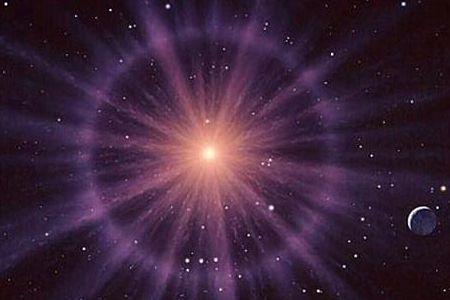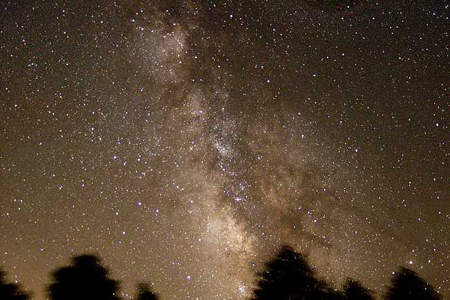#January2011
Earth May Be Getting A Second Sun. For A Bit.

Betelgeuse is a pissed off red supergiant star. Soon, Betelgeuse is going to go supernova. According to Alasdair Wilkins in an article at io9, this is going to be particularly righteous for the citizens of Earth. You know, provided we’re alive and such.
The star is located in the Orion constellation, about 640 light-years away from Earth. It’s one of the bright and biggest stars in our galactic neighborhood – if you dropped it in our Solar System, it would extend all the way out to Jupiter, leaving Earth completely engulfed. In stellar terms, it’s predicted to explode in the very near future. Of course, the conversion from stellar to human terms is pretty extreme, as Betelgeuse is predicted to explode anytime in the next million years.
Out-fucking-standing. Notice the phrase “in stellar terms, it’s predicted to explode in the very near future.” I get the feeling we’re all going to be dead when it occurs. But wait, what is this going to look like?
But still, whether the explosion occurs in 2011 or 1002011 (give or take 640 years for the light to reach Earth), it’s going to make for one of the most unforgettable light shows in our planet’s history. For a few weeks, the supernova will be so bright that there will appear to be two stars in the sky, and night be will indistinguishable from day for much of that time. So don’t count on getting a lot of sleep when Betelgeuse explodes, because the only sensible thing for the world to do will be to throw a weeks-long global supernova party.
A few weeks of permanent daylight across the globe? This is fucking amazing. If you’re often wondering what the point of trudging along in your empty life, and you need a reason to live: stick it out for this.
Via.
Milky Way Galaxy May Be Surrounded By Dark Matter Galaxies. Wut?

Speculative science is awesome. Especially if you’re into theorizing and not, you know, hardcore facts. This seems to always be the case when talking about sweet-ass outer-space things. You know. Black holes, dark matters. That sort of swag. Well today, we have this wonderful little teaser: is the Milky Way Galaxy surrounded by invisible dark matter galaxies? Dun, dun, dun!
Alasdair Wilkins over at io9 brings the interesting article to the forefront, and this is the dealio. Based on how gravity affects gases at the edge of the Milky Way, we should have a satellite galaxy located 26,000 light-years away. The problem? We ain’t never seen that thang. Wilkins elaborates:
Astronomer Sukanya Chakrabarti looked for gravitational effects created by potential satellite galaxies of our home, the Milky Way. Not unlike the gas giants such as Jupiter of Saturn, the Milky Way has a bunch of relatively tiny “moon” galaxies. The most famous of these, the Magellanic Clouds, are about 10 percent the size of our galaxy, but most of these satellite galaxies are less than a hundredth the size of the Milky Way.
Back in the 19th century, astronomers detected the planet Neptune by observing the slight gravitational wobble of Uranus, which could only be caused by an undetected planet further out. The same basic principle is at work here, as this mysterious Galaxy X is creating movement in the gas at the edge of our galaxy. Chakrabarti suspects the galaxy is composed mostly of dark matter, which is part of the reason why we hadn’t found it up to this point.
If it exists, Galaxy X would be about 1% the size of the Milky Way, making it the third largest satellite after the Magellanic galaxies. While dark matter would make up most of its mass, there would likely still be some dim stars of regular matter in there as well. The galaxy lies on the same plane as our galactic disc, meaning astronomers need to look through all the bright lights of the Milky Way just to see Galaxy X. Still, now that we know where to look, Chakrabarti says, we should be able to find it.
A dark matter galaxy! Interesting shit. I wonder what our dark matter companions are up to? Are they fans of sports? What sort of thing turns them on? Read more.




